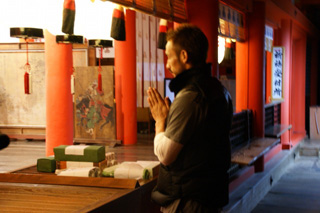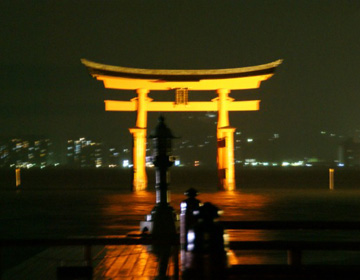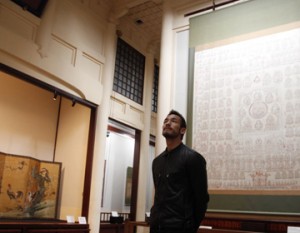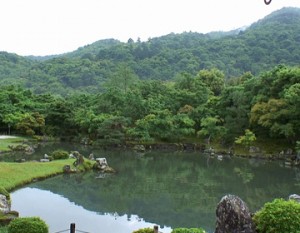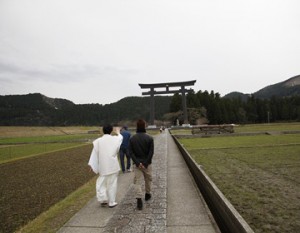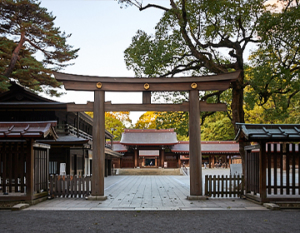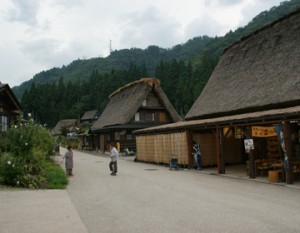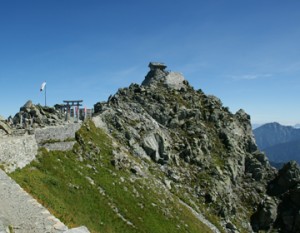Standing Just by the Weight of the Gates
Itsukushima Shrine is known for the vermillion colored grand gates that stand in the ocean. Many people are familiar with this scene from television or from a photograph.
The size of the gates are the same as the Buddha statue of Nara, and is 16 meters. The weight is about 60 tons and we are left to wonder how it stands there in the middle of the sea.
Actually, the columns are not buried underneath the sands. It stands with the weight of the gates themselves, with pinewood stakes struck in the ground for reinforcement, and extra stones placed in a wooden box adding more weight. An incredible idea and the wisdom of people of the past who were able to conjure up such a scheme.
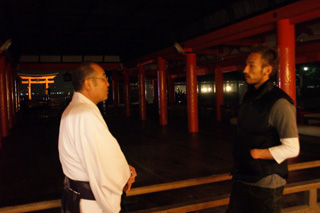
Designated as World Heritage
Itsukushima Shrine is known to have had strong ties with Taira no Kiyomori. It was first built in the first year of Suiko, in 593, long before Kiyomori’s reign at the end of the Heian period. However Kiyomori, with high respect and belief for the shrine, built the corridor to the floating main shrine in 1168.
At low tide, you can walk to the majestic gates by foot, but when the tides are high, it looks as though the main shrine and the corridor is floating in the ocean. This idea of creating the shrine as though is a part of the shrine premises was upon the belief that the entire island was enchanted.
It faces the Seto Inland Sea, and in the back soars the Miyama mountains, believed to be where the gods descend, a scenic harmony created upon the reverence of nature. It was designated as UNESCO World Heritage in 1996 because it is a brilliant piece of architecture, and also because the entire island is highly appraised as a scenic view with cultural background.
